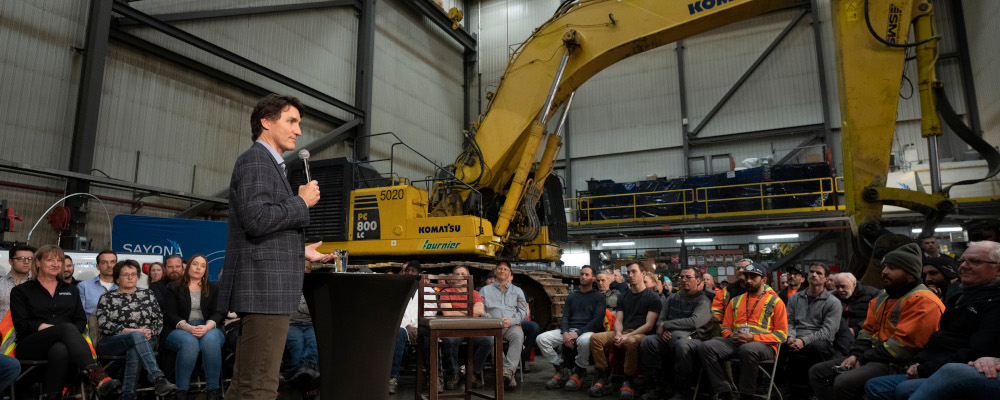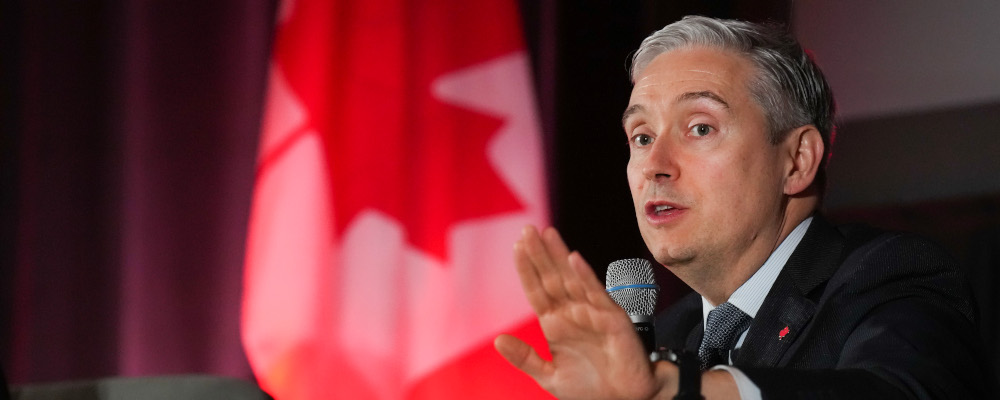From the acquisition of a rare earths stockpile from a mine in the Northwest Territories to the purchasing of stakes in Canadian miners Solaris Resources and First Quantum, a recent spate of Chinese investment in Canadian mining projects has rightly sparked concerns. In the past three years, many Western nations including Canada have put out critical minerals strategies to promote friendly sources of supply and mitigate Chinese dominance in the sector. Yet we are still falling behind.
At the same time, one empathizes with Canadian miners looking to China for investment; they are not finding it anywhere else. Junior and mid-sized miners are starved for capital even as Western politicians are proclaiming their commitment to the sector.
Thankfully, there is a solution to the challenge of both reducing dependence on Chinese-controlled exports and boosting Western investment in our own supply. It is time to establish strategic reserves for critical minerals.

The concept has plenty of precedent. While many today will know the International Energy Agency (IEA) from its efforts to transition off fossil fuels, it was originally created in 1974 following a series of oil shocks with a mandate to mitigate oil supply disruptions. Its members include most of Europe, North America, Japan, Korea, New Zealand, and Australia.
Its primary tool for managing oil supplies was the establishment of strategic reserves. IEA members are required, to this day, to hold oil stocks equivalent to at least 90 days of net imports (Canada, as one of a handful of oil exporters in the IEA, requires no such reserve).
The utility of those oil reserves was demonstrated in 2022 when Russia invaded Ukraine and disrupted global commodity markets, leading to price spikes. A coordinated release amongst IEA members followed, with the Biden Administration leading the way. The U.S. released over 200 million barrels from their Strategic Petroleum Reserve (SPR) over a series of months, which succeeded in bringing prices down at the pump. It was a double win for the American taxpayer: those barrels were sold at an average of $95 a barrel; replacement barrels are now being purchased in the $70s.
A number of forces are conspiring to make now the right time for Western nations to collectively establish critical reserves of minerals. First is their key role in the energy transition. The IEA itself estimates we will need six times more minerals by 2040 to meet net-zero goals. We are nowhere near mining that amount; in fact, global mineral production peaked in 2019. Canada’s own production of critical minerals such as copper, nickel, cobalt, and zinc is actually in decline.
Second is the need to enhance Western supply chain independence. Our most urgent problem is Chinese dominance in both the mining and processing of many critical minerals. But in general, minerals are geographically concentrated, often in politically unstable regions, adding vulnerability to supply chains. The West must find ways to mitigate those risks to sustain an energy transition by producing more of our own supply, diversifying suppliers where that’s not possible, and stockpiling for when all else fails.
Third is the inability of miners to attract more investment despite expectations of growing demand. Global capital expenditures in mining peaked in 2013. While investment has risen since the market bottomed in 2017, spending levels are still only two-thirds what they were a decade ago. That figure doesn’t account for inflation and the addition of a billion people, which makes the situation look even more dire.

Investors are still scared off by their losses from when the last cycle went bust, as well as a lack of public support for extraction, regulatory burdens, volatility, supply chain risks, long timelines, and other factors. Mining is struggling to compete with other sectors for capital.
Some countries, such as Japan, already stockpile critical minerals, and commercial reserves exist across the world. The U.S. also has a National Defense Stockpile, but its current value is a rounding error compared to the height of the Cold War, and it is seeking to build it up. But an uncoordinated, every-man-for-themselves approach carries its own risks. We do not want Western nations competing against each other for scarce resources, something we saw drive up global LNG costs in 2022.
Minerals behave very differently in global markets than oil, and they vary from one to another too. It won’t be as easy as replicating the system for oil. But at some level, the concept of a critical minerals reserve should be to establish a floor for commodity prices that is high enough to spur development in Western and other friendly jurisdictions, perhaps in “take-or-pay” types of arrangements. The goal is not just to establish minimum reserves, but to incent new production.
The devil will be in the details and thought will need to go into maximizing the security of supply without needlessly distorting market forces. But governments should prepare to apply the one thing they have that the market currently lacks: a source of patient capital.
There is no doubt that our collective security is put at risk by the current state of the critical minerals market. Investment is not flowing at the rate we will need to ensure balanced markets in the coming decade. We are becoming very susceptible to supply shocks that will drive inflation, disrupt economic development, hamper energy diversification, and embolden producers of key minerals that do not have the West’s best interests at heart.
Canadian foreign policy has been lacklustre of late. One area where we are still looked upon to lead—and retain some ability to do so—is in natural resources. Coming up with solutions to the problem of critical minerals supply that leverages the collective experience of our mining and investment community is an obvious place for Canada to contribute.




